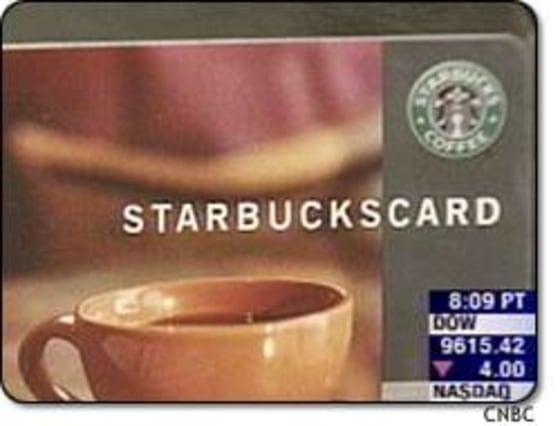Just in time for the holiday shopping season, sales of gift cards are picking up speed. One big reason: About half of Americans say they’d rather choose their own presents.
Charter One Bank is trying something new. They’re selling a holiday gift card that you can use like a credit card. It’s a prepaid Mastercard accepted like any other: You order it from the bank with the name of the recipient embossed the card. Then, that person can use it just like a gift certificate wherever they want to, and when the value’s used up, that’s it. You cut it up. And the bank isn’t charging a fee for the card — that’s a first.
Just when you thought it was safe to go shopping again, look out at the cashier counter, as American consumers are expected to snap up $18 billion worth of what used to be known as gift certificates before Christmas day.
Now they call them “gift cards” — or if you want to be nerdy, “stored-value cards.”
You get them as a gift, and you go shopping with them. And each time you buy something with them, they deduct the value of the item until you’re down to zero — no more paperwork.
Almost one out of every two consumers, some 48.4 percent polled by the National Retail Federation, said they’d rather have a gift card this year. The average spent per card is about $34, and the total market is about ten percent of all retail holiday sales.
We wondered why? What is it with cards over real gifts? We asked retail economist Richard Hastings.
“When the shopper request gifts that have to do with fabric that you need to feel, shoes you need to try on, fragrances that you need to smell, you’re entering into a world of very personal shopping experience,” he said. “And the only person who can do that and make the decision about what product that person wants is the recipient of the gift card.”
Bain and Co. retail consultant Rob Markey, who has studied gift-card users, says many shoppers feel more flush when they use gift cards. Somehow it doesn’t seem like real money.
“When the gift cards are redeemed, they tend to buy higher margin goods than they do when they’re buying with their own cash,” he said. “To a lot of consumers, the gift cards feel like funny money. [Since] they are a gift, they’re much less price conscious. They buy more ‘impulse’ items and things that they’re more excited about.”
One researcher who has looked at the gift-card craze says that being able to go to the store and browse for yourself can be a liberating and much more rewarding experience than opening up another shirt-and-tie present under the tree.
